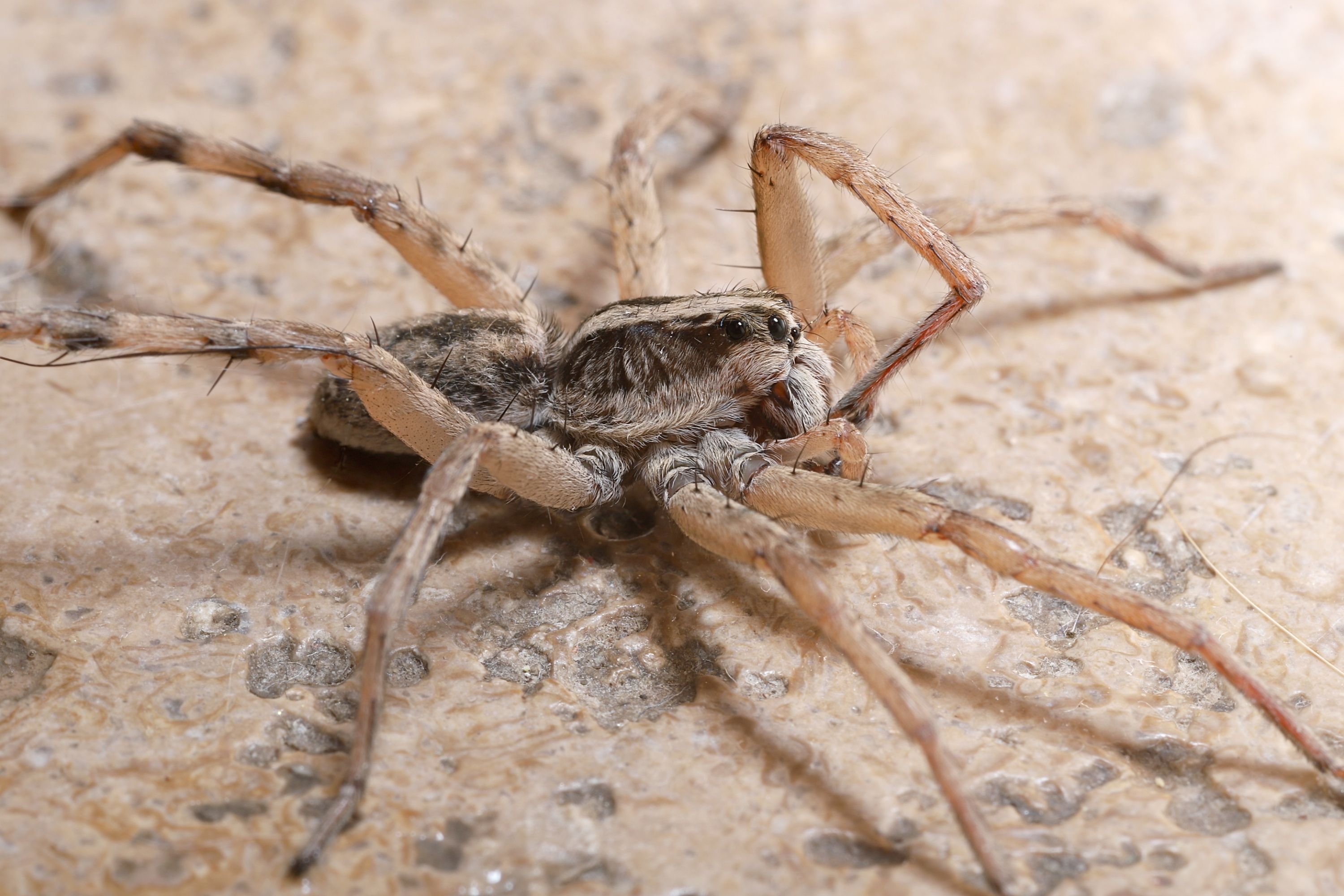Carolina wolf spider
(Hogna carolinensis)

Description
Hogna carolinensis, commonly known as the Carolina wolf spider, is found across North America. It is the largest of the wolf spiders in North America,typically measuring at 18–20 mm for males and 22–35 mm for females. The Carolina wolf spider is mottled brown with a dark underside. Males have orange coloration on their sides. They live in either self-made burrows or ones they find. Like all wolf spiders, H. carolinensis does not make a web to catch prey. They hunt by ambushing prey from their burrows. These spiders are particularly known for the females carrying their egg sacs on their bodies during the incubation period. The Carolina wolf spider also has a unique type of venom that both paralyzes their prey and helps prevent microbes from their prey infecting them. H. carolinensis is able to thermoregulate quite well. This is particularly important for animals that inhabit desert ecosystems or other locations with large temperature swings. Hogna carolinensis, commonly known as the Carolina wolf spider, is found across North America. It is the largest of the wolf spiders in North America,typically measuring at 18–20 mm for males and 22–35 mm for females. The Carolina wolf spider is mottled brown with a dark underside. Males have orange coloration on their sides. They live in either self-made burrows or ones they find. Like all wolf spiders, H. carolinensis does not make a web to catch prey. They hunt by ambushing prey from their burrows. These spiders are particularly known for the females carrying their egg sacs on their bodies during the incubation period. The Carolina wolf spider also has a unique type of venom that both paralyzes their prey and helps prevent microbes from their prey infecting them. H. carolinensis is able to thermoregulate quite well. This is particularly important for animals that inhabit desert ecosystems or other locations with large temperature swings. The Carolina wolf spider is the largest wolf spider in North America. Adult females can reach 22–35 mm and adult males 18–20.They are an overall light brown color, but have darker brown patterning on their backs.Their undersides are a darker black and the males can have orange coloration on the sides of their abdomen.
Taxonomic tree:







